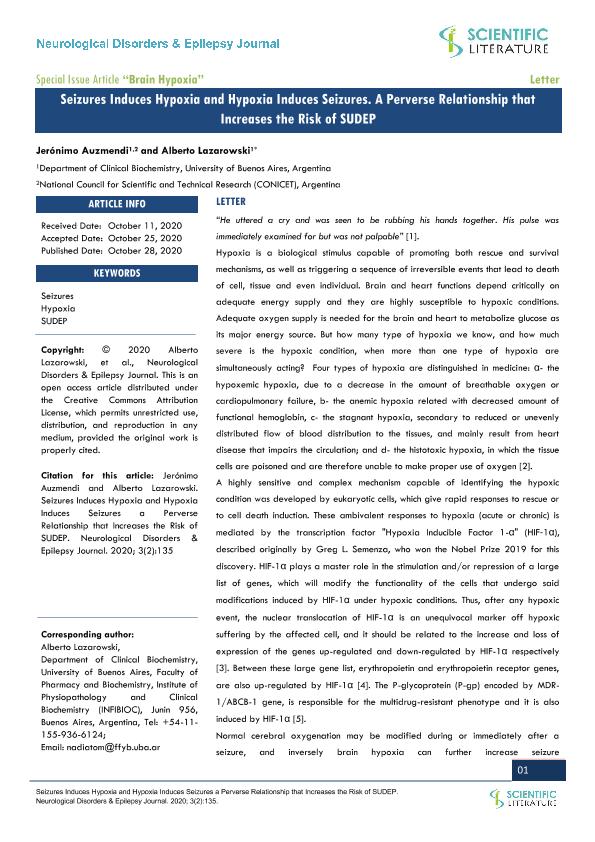Artículo
Seizures Induces Hypoxia and Hypoxia Induces Seizures: A Perverse Relationship that Increases the Risk of SUDEP
Fecha de publicación:
10/2020
Editorial:
Scientific Literature
Revista:
Neurological Disorders & Epilepsy Journal
ISSN:
2349-5014
Idioma:
Inglés
Tipo de recurso:
Artículo publicado
Clasificación temática:
Resumen
He uttered a cry and was seen to be rubbing his hands together. His pulse wasimmediately examined for but was not palpable.Hypoxia is a biological stimulus capable of promoting both rescue and survivalmechanisms, as well as triggering a sequence of irreversible events that lead to deathof cell, tissue and even individual. Brain and heart functions depend critically onadequate energy supply and they are highly susceptible to hypoxic conditions.Adequate oxygen supply is needed for the brain and heart to metabolize glucose asits major energy source. But how many type of hypoxia we know, and how muchsevere is the hypoxic condition, when more than one type of hypoxia aresimultaneously acting. Four types of hypoxia are distinguished in medicine: α- thehypoxemic hypoxia, due to a decrease in the amount of breathable oxygen orcardiopulmonary failure, b- the anemic hypoxia related with decreased amount offunctional hemoglobin, c- the stagnant hypoxia, secondary to reduced or unevenlydistributed flow of blood distribution to the tissues, and mainly result from heartdisease that impairs the circulation; and d- the histotoxic hypoxia, in which the tissuecells are poisoned and are therefore unable to make proper use of oxygen.
Palabras clave:
SEIZURES
,
HYPOXIA
,
SUDEP
Archivos asociados
Licencia
Identificadores
Colecciones
Articulos(OCA HOUSSAY)
Articulos de OFICINA DE COORDINACION ADMINISTRATIVA HOUSSAY
Articulos de OFICINA DE COORDINACION ADMINISTRATIVA HOUSSAY
Citación
Auzmendi, Jerónimo Andrés; Lazarowski, Alberto Jorge; Seizures Induces Hypoxia and Hypoxia Induces Seizures: A Perverse Relationship that Increases the Risk of SUDEP; Scientific Literature; Neurological Disorders & Epilepsy Journal; 10-2020; 1-6
Compartir




